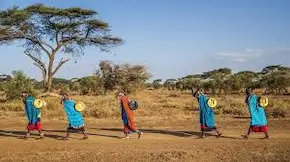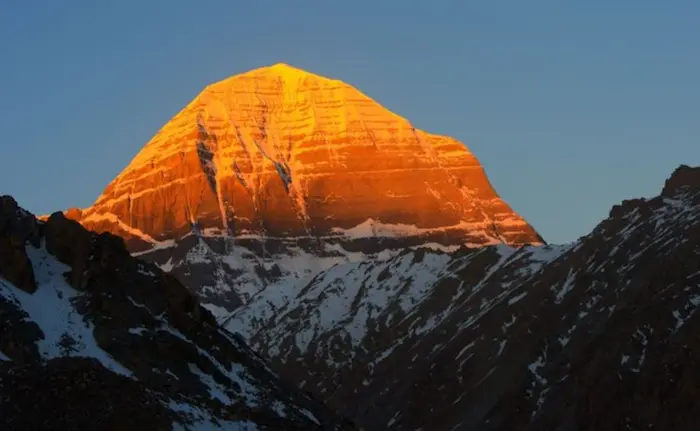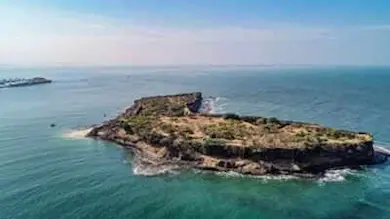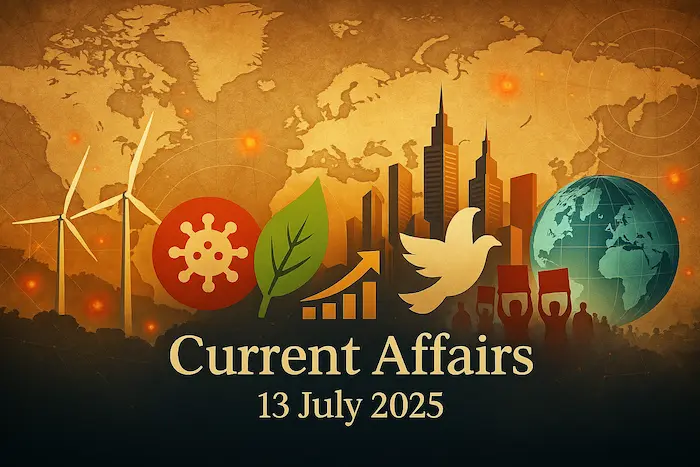1. Governor’s Rule in Chakma Autonomous District Council (CADC), Mizoram – Polity
Why in News?
The Governor of Mizoram has imposed Governor’s Rule in the Chakma Autonomous District Council (CADC) due to ongoing political instability and frequent changes in leadership.
About Autonomous District Councils (ADCs)
Constitutional Basis
- Established under the Sixth Schedule of the Indian Constitution.
- Designed to provide autonomy and self-governance to tribal areas in select North-Eastern states.
States with Sixth Schedule ADCs
- Assam, Meghalaya, Tripura, and Mizoram
Key Features and Powers of ADCs
| Feature | Description |
|---|---|
| Composition | Up to 30 members (26 elected, 4 nominated by Governor) |
| Tenure | 5 years from date of constitution |
| Legislative Powers | Laws on land, agriculture, forest use (excluding reserved forests) |
| Customary Laws | Inheritance, marriage, divorce, social customs |
| Judicial Powers | Village courts for tribal disputes (up to 5 years’ sentence) |
| Administrative Functions | Oversee health, education, infrastructure, market regulation |
| Revenue Powers | Tax on trades, professions, vehicles, animals, markets, roads etc. |
| Trade Regulation | Can restrict trade and money lending by non-tribals (with Governor’s consent) |
Autonomy and Challenges
Extent of Autonomy
- Enjoy significant legislative, executive, and judicial autonomy
- State and Central laws apply only if explicitly extended by Governor
Governor’s Role
- Acts as a supervisory authority
- Can approve, withhold, or annul ADC laws and decisions
Limitations and Issues
- Political instability (e.g., frequent leadership changes like in CADC)
- Limited financial resources, hindering developmental initiatives
- Administrative inefficiency due to lack of trained personnel
- State interference, despite constitutional autonomy
Exam Connect – Possible Questions
Prelims
1. The Sixth Schedule of the Indian Constitution is related to:
A. Panchayati Raj
B. Autonomous governance in tribal areas of the Northeast
C. Financial relations between the Centre and States
D. Emergency provisions for border areas
Answer: B. Autonomous governance in tribal areas of the Northeast
2. Which of the following statements is/are correct about ADCs?
1.They can legislate on reserved forests.
2.They can regulate marriage and divorce under customary laws.
3.Their laws apply without the need for Governor’s assent.
Options:
A. 1 and 2 only
B. 2 only
C. 1 and 3 only
D. 1, 2, and 3
Answer: B. 2 only
Mains
1. “Autonomous District Councils under the Sixth Schedule serve as a model for self-governance in tribal areas, yet face several operational hurdles.” Discuss with special reference to the Chakma Autonomous District Council in Mizoram. (250 words)
2. Examine the role of the Governor in the functioning of Autonomous District Councils under the Sixth Schedule. How does this role impact the balance between autonomy and state control?
2. India’s Gender Gap Report Ranking: A Warning Sign – Indian Society

Why in News?
India has been ranked 131 out of 148 countries in the Global Gender Gap Report 2025 published by the World Economic Forum (WEF). Despite being an emerging economic power, India continues to face structural gender inequality, particularly in health outcomes and economic participation.
Key Findings of the 2025 Gender Gap Report
India’s Global Rank:
- Overall Rank: 131 out of 148 countries
- Economic Participation & Opportunity: Ranked 143rd
- Health and Survival: Critically low, driven by poor nutrition and skewed sex ratio
Major Concerns Identified
1. Structural Gender Inequality
- Persistent disparities in health, employment, and leadership
- Economic progress is not translating into social progress for women
2. Skewed Health Outcomes
- Anaemia affects ~57% of women aged 15–49, impacting productivity and learning
- Skewed sex ratio at birth due to cultural son preference
- Lack of gender-sensitive healthcare investment at policy level
3. Economic Exclusion
- Women underrepresented in formal workforce and leadership positions
- Unpaid domestic work remains a burden predominantly borne by women
- Large gender pay gaps persist across all sectors
4. Demographic Transition
- India is seeing declining fertility and a rising elderly population
- Greater female participation is critical to supporting future economic demands
Need for Structural Reforms
Existing Policy Tools:
- Beti Bachao Beti Padhao, POSHAN Abhiyaan, Maternity Benefit (Amendment) Act, etc.
Issues:
- Implementation gaps, lack of funding, gender-blind budgeting
Recommendations:
- Invest in public health and care infrastructure
- Promote gender budgeting at all levels of government
- Increase access to quality jobs, ensure equal pay, and support women’s entrepreneurship
- Design gender-sensitive policies aligned with India’s demographic and economic trajectory
Exam Connect – Possible Questions
Prelims
1. The Global Gender Gap Report is published by:
A. UNDP
B. UN Women
C. World Bank
D. World Economic Forum
Answer: D. World Economic Forum
2. Consider the following statements:
1.India ranks 131st in the 2025 Global Gender Gap Report.
2.The female labor force participation in India exceeds 50%.
3.The report includes metrics on political empowerment and education.
Which of the above is/are correct?
A. 1 and 3 only
B. 2 and 3 only
C. 1 only
D. 1, 2, and 3
Answer: A. 1 and 3 only
Mains
1. “Despite policy initiatives, India continues to perform poorly on global gender indices.” Examine the structural reasons behind India’s low gender gap ranking and suggest a roadmap for achieving gender equity. (250 words)
2. How does gender inequality in health and economic participation impact India’s demographic dividend and overall economic potential? Explain with data and examples.
3. Sanchar Mitra Scheme – Expanding Telecom Literacy Through Student Engagement – Governance
Why in News?
The Department of Telecommunications (DoT) has expanded the Sanchar Mitra Scheme to involve engineering students as digital ambassadors. The initiative is designed to improve telecom literacy, promote digital safety, and increase citizen engagement in the evolving telecom landscape.
About the Sanchar Mitra Scheme
Objective
To build a nationwide volunteer base of tech-savvy student ambassadors (Sanchar Mitras) who will promote:
- Safe and responsible use of telecom services
- Awareness about digital fraud and cyber hygiene
- Citizen participation in India’s digital transformation
Key Features
| Feature | Description |
|---|---|
| Launched by | Department of Telecommunications (DoT), Ministry of Communications |
| Target Group | Engineering students from fields like telecom, computer science, electronics, cybersecurity |
| Volunteer Selection | Nominated in coordination with DoT field units and educational institutions |
| Training Provided By | National Communications Academy – Technology (NCA-T) & DoT Media Wing |
| Training Focus | Cyber fraud, EMF radiation, digital behavior, responsible telecom use |
| Core Pillars | Connect, Educate, Innovate |
| Community Outreach | Volunteers will work with schools, NGOs, and rural communities |
| Tech Literacy Goals | Promote knowledge of 5G, 6G, AI, and other emerging telecom technologies |
Significance of the Scheme
Bridging the Awareness Gap
- Addresses the urban-rural divide in telecom knowledge and access
- Promotes grassroots digital literacy, especially in semi-urban and rural areas
Fostering Digital Citizenship
- Empowers citizens with tools to avoid cyber scams, identity theft, and misinformation
- Encourages responsible online behavior and telecom use
Youth Engagement in Governance
- Creates a link between governance and youth participation
- Encourages innovation and civic responsibility among students
Strategic Relevance
- Supports India’s Digital India, Cyber Surakshit Bharat, and 5G/6G readiness programs
- Enhances digital infrastructure awareness and public trust in telecom governance
Exam Connect – Possible Questions
Prelims
1. The Sanchar Mitra Scheme is primarily aimed at:
A. Expanding mobile network infrastructure in rural areas
B. Promoting telecom manufacturing in India
C. Engaging students to promote telecom literacy and digital safety
D. Supporting government telecom employees with additional training
Answer: C. Engaging students to promote telecom literacy and digital safety
2. Under the Sanchar Mitra Scheme, student volunteers receive training from:
1.National Communications Academy – Technology (NCA-T)
2.Telecom Regulatory Authority of India (TRAI)
DoT Media Wing
Choose the correct option:
A. 1 and 2 only
B. 1 and 3 only
C. 2 and 3 only
D. All of the above
Answer: B. 1 and 3 only
Mains
1. “Telecom literacy and digital safety are foundational to India’s digital transformation.” Examine the objectives and significance of the Sanchar Mitra Scheme in promoting inclusive and participatory governance. (250 words)
Q2. Discuss the role of youth engagement in spreading digital literacy and safeguarding citizens in the age of emerging telecom technologies.
4. Government’s Claims on Reducing Inequality in India – A Critical Evaluation – Governance
Why in News?
The Indian government has cited the World Bank’s Gini Index (25.5) to claim that India ranks among the most equal societies globally. However, several economists and researchers have questioned this claim, citing flaws in consumption-based inequality measures and alternative data sources that paint a contrasting picture.
Key Concepts and Definitions
Gini Index (Coefficient)
- A statistical measure of income or wealth inequality
- Range: 0 (perfect equality) to 100 (perfect inequality)
- India’s reported Gini (2024): 25.5, based on consumption data
Criticism of Gini (Consumption-Based)
| Issue | Explanation |
|---|---|
| Underreports Inequality | High-income earners consume a smaller portion of their wealth, masking disparities |
| Low Participation of the Wealthy | Richest households often underrepresented in consumption surveys |
| Not Comparable Globally | OECD nations use income-based Gini, making comparisons with India’s consumption-based Gini misleading |
Alternative Measures of Inequality
| Metric | Description |
|---|---|
| Palma Ratio | Ratio of income of top 10% to bottom 40% – highlights wealth concentration |
| Theil Index | Captures inequality within and between groups; sensitive to top-end disparities |
| World Inequality Database (WID) | Uses income tax data, showing India’s Gini increased from 52 (2004) to 62 (2023) |
Implications of Misinterpreting Inequality
1. Policy Design Failures
- Growth-centric policies may ignore redistributive needs
- Welfare targeting errors, especially in rural and vulnerable households
2. Exclusion of Marginalized Groups
- Inequality disproportionately affects women, Dalits, and tribals
- Underreporting leads to inadequate support and budget allocation gaps
3. Risk of Social Instability
- Public mistrust, civil discontent, and weakening of democratic institutions
Way Forward
Data Integration
- Merge consumption data with income tax filings and asset declarations
Use of Composite Metrics
- Supplement Gini with Palma Ratio, Theil Index, and WID statistics
Inclusive Policy Planning
- Design evidence-based policies that consider the multi-dimensionality of inequality
Transparent Reporting
- Encourage open-access inequality data, updated regularly and peer-reviewed
Exam Connect – Possible Questions
Prelims
1. The Gini Coefficient is used to measure:
A. Employment generation
B. Gender inequality
C. Income inequality
D. Educational disparity
Answer: C. Income inequality
2. Which of the following inequality indices decomposes inequality between and within population subgroups?
A. Gini Index
B. Human Development Index
C. Theil Index
D. Gross National Income
Answer: C. Theil Index
Mains
1. “Accurate measurement of inequality is critical for designing inclusive policies.” Critically evaluate the reliability of India’s Gini Index and discuss alternative ways to measure inequality. (250 words)
2. Discuss how flawed inequality metrics can impact governance and public welfare delivery in India. What reforms are needed in inequality data collection and analysis?
5. India and the Global AI Race – A Strategic and Democratic Imperative – Governance

Why in News?
While the US and China dominate global Artificial Intelligence (AI) innovation, and the EU leads in AI regulation, India is striving to emerge as a key voice representing the Global South. However, the absence of a formal, politically backed national AI strategy poses a major challenge to India’s ambitions in global AI governance.
Key Highlights and Concerns
India’s Global Aspirations in AI
- India aims to leverage its democratic credibility and digital infrastructure to represent developing nations (Global South) in international AI forums.
- Seeks to play a proactive role in shaping equitable and inclusive AI norms.
Governance and Policy Gaps
| Issue | Explanation |
|---|---|
| Lack of National Strategy | The ₹10,000 crore IndiaAI Mission lacks cabinet endorsement, impeding coordination and accountability |
| Weak Political Backing | AI governance is not prioritized in political discourse or parliamentary debate |
| Fragmented Institutional Approach | Various ministries and bodies function without synergy, leading to duplicated efforts and unclear mandates |
Structural Challenges
Research & Talent Deficit
- Shortage of AI-specialized PhDs
- Brain drain due to lack of opportunities in research and innovation
- Poor collaboration between academia, industry, and government
Private Sector Limitations
- Indian IT firms prioritize service delivery over core AI research
- Weak investment in deep tech innovation and foundational AI
Democratic Governance Gaps
- Absence of multi-party consensus or parliamentary oversight in AI policymaking
- Lack of ethics frameworks, human rights safeguards, and public consultation mechanisms
Comparison with Global Peers
| Country | Key AI Governance Feature |
|---|---|
| US | Aggressive private-led innovation + National AI Initiatives |
| China | State-driven AI development with military applications |
| EU | Strong emphasis on AI regulation, ethical use, and privacy |
| UK | Coordinated AI strategy through central agencies and legal oversight |
India lags behind due to fragmented policymaking, inadequate R&D funding, and limited global influence.
Strategic Significance of AI for India
- National Security: AI is central to cyber defense, surveillance, and military tech
- Economic Growth: Potential to add $1 trillion to India’s GDP by 2035
- Social Equity: AI applications in healthcare, education, agriculture, and public service delivery
- Global Norm Setting: India’s digital diplomacy can shape ethical and inclusive AI norms
Exam Connect – Possible Questions
Prelims
1. The IndiaAI Mission is implemented under which ministry?
A. Ministry of Science and Technology
B. Ministry of Electronics and Information Technology
C. NITI Aayog
D. Ministry of Communication
Answer: B. Ministry of Electronics and Information Technology
2. Which of the following countries is known for prioritizing ethical and regulatory frameworks in AI development?
A. China
B. United States
C. European Union
D. Russia
Answer: C. European Union
Mains
1. “Artificial Intelligence is not just about innovation—it’s about governance, ethics, and global influence.”
Critically examine India’s approach to AI governance in the context of global developments. (250 words)
2. Discuss the structural and institutional challenges that India faces in becoming a global leader in AI. What steps are required to build a democratic and strategic AI governance framework?
6. Resumption of the Kailash-Mansarovar Yatra (2025) – History & Culture

Why in News?
After a five-year suspension due to the Covid-19 pandemic and Indo-China tensions, the Kailash-Mansarovar Yatra has resumed in 2025. The Ministry of External Affairs has selected 750 pilgrims to undertake the sacred journey via Uttarakhand’s Lipulekh Pass and Sikkim’s Nathu La Pass.
About Kailash-Mansarovar Yatra
Mount Kailash (6,638 m) – Spiritual and Geographical Significance
| Religion | Belief |
|---|---|
| Hinduism | Abode of Lord Shiva and Goddess Parvati |
| Buddhism | Center of the universe, connected with Mount Meru |
| Jainism | Site of liberation (moksha) of first Tirthankara, Rishabhanatha |
| Bon (Tibetan faith) | Home of sky goddess Sipaimen |
- Located in Tibet’s Ngari Prefecture
- Source of four major rivers:
- Brahmaputra
- Indus
- Sutlej
- Karnali (Ghaghara)
Sacred Lakes
| Lake | Features |
|---|---|
| Manasarovar | Freshwater lake; associated with purity and spiritual cleansing |
| Rakshastal | Saltwater lake; associated with demonic energies (as per Hindu texts) |
Historical Evolution of the Pilgrimage
| Period | Key Development |
|---|---|
| Pre-1900s | Undertaken by advanced spiritual seekers |
| 1905 | Charles Sherring, British official, pushed for route development |
| 1930s | ~730 pilgrims/year from India undertook the yatra |
| 1950 | Pilgrimage halted after China’s annexation of Tibet |
| 1981 | Yatra resumed through Lipulekh after Indo-China understanding |
| 2006 onwards | Nathu La Pass (Sikkim) opened as alternate route |
Route Details (2025)
| Route | Description |
|---|---|
| Lipulekh Pass (Uttarakhand) | 5 batches × 50 pilgrims = 250 pilgrims |
| Nathu La Pass (Sikkim) | 10 batches × 50 pilgrims = 500 pilgrims |
- Involves trekking around:
- Lake Manasarovar – 90 km
- Mount Kailash – 52 km (challenging “Parikrama”)
Modern Infrastructure and Accessibility
- Construction of motorable roads and shelters
- Reduced trekking distances due to road access
- Government initiatives for pilgrim welfare and safety
Strategic and Cultural Implications
- Enhances India-China people-to-people diplomacy
- Strengthens India’s soft power through spiritual heritage
- Highlights border infrastructure and regional connectivity in Uttarakhand and Sikkim
Exam Connect – Possible Questions
Prelims
1. Which of the following rivers originates near Mount Kailash?
1.Indus
2.Ganges
3.Sutlej
4.Brahmaputra
Select the correct answer:
A. 1, 2, and 3
B. 1, 3, and 4
C. 2, 3, and 4
D. All of the above
Answer: B. 1, 3, and 4
2. The Kailash-Mansarovar Yatra resumed in 1981 through which pass?
A. Shipki La
B. Nathu La
C. Rohtang Pass
D. Lipulekh Pass
Answer: D. Lipulekh Pass
Mains
1. “The Kailash-Mansarovar Yatra is not only a spiritual pilgrimage but also a cultural and geopolitical journey.”
Discuss the historical, religious, and strategic significance of the Kailash-Mansarovar Yatra. (250 words)
2. Trace the evolution of the Kailash-Mansarovar Yatra from ancient times to the present day. How has modern infrastructure changed the nature of this pilgrimage?
7. Maratha Military Landscapes of India – Recognized as UNESCO World Heritage Site – History & Culture

Why in News?
The ‘Maratha Military Landscapes of India’ has been officially inscribed on the UNESCO World Heritage List, making it India’s 44th World Heritage Property. This inclusion recognizes the strategic military architecture of the Maratha Empire and its contribution to India’s cultural heritage.
About Maratha Military Landscapes
Period: 17th – 19th Century CE
States Covered: Maharashtra and Tamil Nadu
Key Features
- The inscription covers a network of 12 strategically located forts used for defense, administration, and control during the Maratha Empire.
- Reflects indigenous military planning adapted to diverse terrains: hills, coasts, forests, and islands.
- Demonstrates non-Mughal architectural style, emphasizing local materials, geographic defense, and natural camouflage.
List of 12 Forts in the Heritage Network
| Fort Name | Location | Terrain Type |
|---|---|---|
| Salher | Maharashtra | Hill Fort |
| Shivneri | Maharashtra | Hill Fort |
| Lohgad | Maharashtra | Hill Fort |
| Khanderi | Maharashtra Coast | Island Fort |
| Raigad | Maharashtra | Hill Fort |
| Rajgad | Maharashtra | Hill Fort |
| Pratapgad | Maharashtra | Hill-Forest Fort |
| Suvarnadurg | Maharashtra Coast | Island Fort |
| Panhala | Maharashtra | Hill-Plateau Fort |
| Vijaydurg | Maharashtra Coast | Coastal Fort |
| Sindhudurg | Maharashtra Coast | Island Fort |
| Gingee Fort | Tamil Nadu | Hill Fort |
Protection Status
- Archaeological Survey of India (ASI): Shivneri, Lohgad, Raigad, Suvarnadurg, Panhala, Vijaydurg, Sindhudurg, and Gingee
- Government of Maharashtra (Directorate of Archaeology & Museums): Salher, Rajgad, Khanderi, and Pratapgad
Architectural and Strategic Significance
| Aspect | Description |
|---|---|
| Terrain-Adaptive Design | Built to blend with natural landscapes (e.g., hilltops, coastal islands) for defensive advantage |
| Indigenous Construction | Use of local stone, natural water systems, and self-sustaining structures |
| Military Innovation | Forts designed for early warning, multi-directional attacks, and supply resilience |
| Symbol of Sovereignty | Forts like Raigad served as capitals, projecting Maratha self-rule |
UNESCO Recognition – Significance
- Preserves and promotes Maratha cultural identity
- Recognizes indigenous military architecture distinct from Mughal or British styles
- Boosts heritage tourism and global awareness
- Strengthens India’s global cultural presence
Exam Connect – Possible Questions
Prelims
1. Which of the following forts is not part of the Maratha Military Landscapes inscribed under UNESCO in 2025?
A. Pratapgad
B. Rajgad
C. Daulatabad
D. Gingee
Answer: C. Daulatabad
2. The Maratha Military Landscapes span which of the following Indian states?
1.Maharashtra
2.Karnataka
3.Tamil Nadu
Choose the correct answer:
A. 1 only
B. 1 and 3 only
C. 2 and 3 only
D. 1, 2, and 3
Answer: B. 1 and 3 only
Mains
1. “The Maratha forts represent a distinct and underrepresented legacy in India’s military history.” Examine the architectural and strategic significance of the Maratha Military Landscapes now recognized by UNESCO. (250 words)
2. Discuss the importance of UNESCO World Heritage designation in preserving regional historical identities with reference to the Maratha Military Landscapes.

